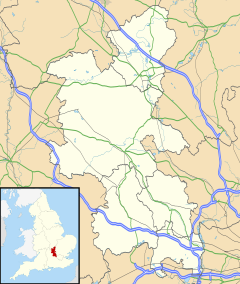Aston Clinton School
| Aston Clinton | |
|---|---|
 Aston Clinton from the church tower |
|
 The Old School |
|
|
Aston Clinton shown within Buckinghamshire
|
|
| Population | 3,682 (2011 Census) |
| OS grid reference | SP8012 |
| Civil parish |
|
| District | |
| Shire county | |
| Region | |
| Country | England |
| Sovereign state | United Kingdom |
| Post town | AYLESBURY |
| Postcode district | HP22 |
| Dialling code | 01296 |
| Police | Thames Valley |
| Fire | Buckinghamshire |
| Ambulance | South Central |
| EU Parliament | South East England |
| UK Parliament | |
| Website | Aston Clinton Parish Council |
Aston Clinton is a historic village and civil parish in the Vale of Aylesbury in Buckinghamshire, England. The village is at the foot of the Chiltern Hills, 2 miles (3.3km) from Weston Turville, 4 miles (6.5km) from Aylesbury and is bisected both at the northern end of the parish by the Aylesbury Arm and in the centre of the parish by the Wendover Arm stretch of the Grand Union Canal. The village lies between the market towns of Tring and Wendover.
It is believed that the village started at the crossing of two Roman roads, Akeman Street and Icknield Way, both of which are still main roads in the village. After the fall of the Roman Empire, it became a Saxon settlement and remains of a Saxon cemetery were found during the construction of the Aston Clinton Bypass.
Before the Norman conquest of England in 1066 the settlement was probably held under patronage of King Edward the Confessor. The village is recorded in the Domesday Book of 1086 where in Old English it was called Estone, which means "eastern estate".
The manor, later to be known as Aston Clinton, was for a short period after 1100 under the control of Edward de Salisbury, who was King Henry I's standard-bearer. In 1217 King Henry III gave it to Sir William de Farendon. However, by 1237 the manor was owned by the de Clinton family, hence the name at that time of Aston de Clinton. William de Clinton separated out from Aston Clinton to a new manor called Chivery as a dowry for his daughter Alice. Sometime after 1239, King Edward I granted the estates to the Montacutes, who were the ancestors of the Earls of Salisbury. Their descendant the Countess of Salisbury was beheaded by King Henry VIII in 1541. Successive families have owned the manor, passing by marriage from the Hastings to the Barringtons, Gerards, and then to Lord Lake of Aston Clinton later to become Gerard Lake, 1st Viscount Lake.
...
Wikipedia

